Sabaidee (Hello in Laos)!
Apologies for the long delay in getting this particular post up.
The longest portion of my Asia Trip Spring 2018 was 5 days 4 nights in Laos. By now I have visited every Southeast Asian country, on this trip I visited my last two which were Brunei and Laos. It would certainly seem to be the case that I unknowingly saved the best for last.
To really get the vibes of Laos, I do recommend you check out Anthony Bourdain’s “Parts Unknown” episode on Laos.
Just a warning, I do start off the below post with a lengthly contemporary historic summary, as it is important that more people learn about the U.S.’ Secret War in Laos.
Introduction: Asia Trip Spring 2018
Review: Royal Brunei Airlines A320 Business Class Bandar Seri – Kuala Lumpur
Luang Prabang, Laos
Review: Rosewood Luang Prabang
Review: Oman Air 787-9 Business Class Bangkok-Muscat
Review: Qatar Airways 787-8 regional “First Class” Muscat-Doha
Review: Qatar Airways 777-300ER Q Suites Doha to New York JFK
So why do I love Laos so much? For one it is relatively untouched by tourism and industrialization. It is still quite mysterious and so very authentic and real. The people here, in spite of what they went through in the 20th century, are friendly, welcoming and hospitable. They go at a very calm pace and are very laidback. Their welcome and smiles are genuine and even while bargaining at the night market, you wont get glares or snares if you refuse to buy and there is no pressuring either, its friendly playful bartering as it should be. The landscape and buildings are so well-preserved and untouched you yourself feel pressure stepping foot around town! The food is also incredibly delicious. In a nutshell, Laos embodies all that make Southeast Asia unique but in a way that is genuine, authentic and un–western.
Laos and the United States
“We should know where we are talking about when we finally do talk about Laos, and who was involved.” -Anthony Bourdain, ‘Parts Unknown.’
Laos is a stunning, mystical, mysterious landlocked Southeast Asian nation. Once a strong kingdom in its own right, it was then colonized (by the invitation of Laos’ king to help them fend off China as Siam was busy fighting off the Brits in the south) by the French before gaining independence and then unfortunately entering into a civil war in the 70s before becoming the communist state it is today. It is among one of the poorest and least visited nations in the world, certainly in Asia. Laos is bordered by China, Thailand, Cambodia and as Anthony Bourdain points out, “as fate would have it, Vietnam.”
Yes, it is important to understand that it would be Laos’ great misfortune to share a large border with Vietnam during the Vietnam. In one of the world’s largest scale covert military actions, Laos became the most bombed nation per capita in history. America’s Secret War from 1964-1973 saw bombs dropped on the relatively innocent nation of Laos (at the time) every nine minutes, 24 hours a day for 10 years. Pilots were encouraged to dump leftovers in Laos on their way home from their missions in North Vietnam. It was in part to cut off Vietnam’s supply chain, but the rules of avoiding civilian buildings and hospitals in Vietnam for some reason did not apply in the bombings of Laos. More U.S bombs were dropped on Laos than were dropped by Germany and Japan in all of WWII, over 2 million tons. Most of which did not detonate and a large amount of those still remain undiscovered scattered across the land.
No sitting U.S. President has ever acknowledge or formally apologized for this, except for President Obama when he visited Laos. Even then, the subject is very sensitive for Laotians and the largest minority group, Hmong people.
It was not easy as an American to visit to UXO (Unexploded Ordinance Program) Non-Governmental Organization headquarter in Luang Prabang, Laos. It is primarily funded by the Australian government, and un-surprisingly not so much by the U.S. although Obama did promise a large sum of money to fund their projects, this money is still on hold but Trump’s administration has not denied or granted it yet, so there is hope. Nonetheless UXO is a must visit for anyone visiting Luang Prabang, it is a crucial part of Laotian and World History that unfortunately is not very well-known. It is also critical that people are aware that the affects of these bombings continue to this very day, and heavily affect children. UXO aims at educating Laotians about how to identify undetonated bombs and how to handle it correctly. It is primarily to educate children who too often will be playing and get injured or killed by an undetonated device that may look like a soccer ball. UXO is also tasked with the monstrous mission of locating and detonating as many of the bombs scattered across the country.
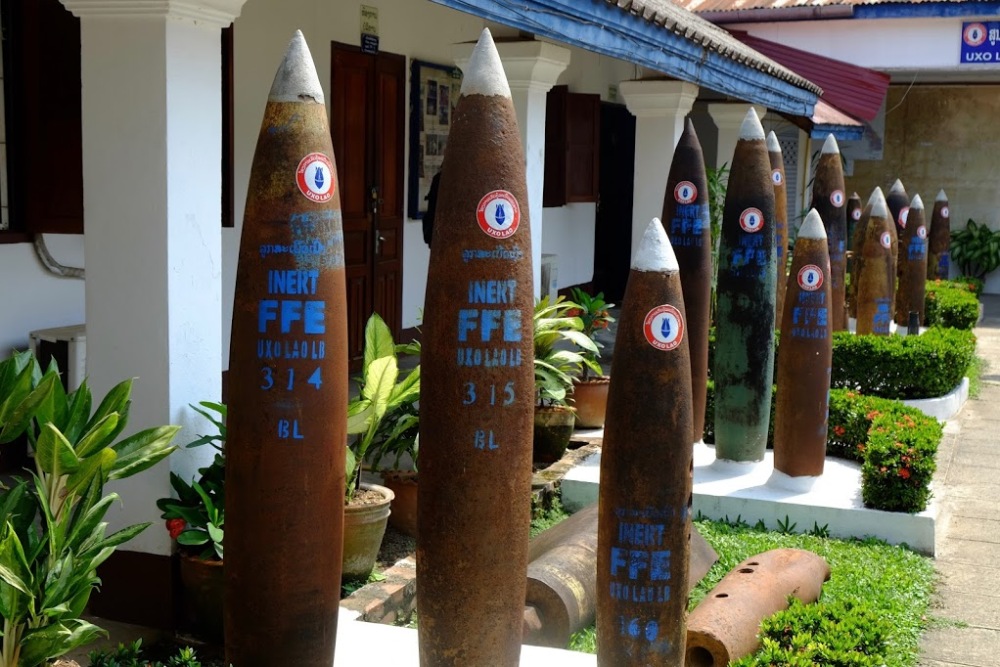

Laos
Despite this dark history, Laos is still full of some of the friendliest and most welcoming people I have met and certainly in Southeast Asia in my opinion. Laotians are very laidback, and everything is done in a calm pace, which to some might be misconstrued as slow. The country is majority Buddhist and monks and temples are highly respected and revered. So much so that residents and now hoards of tourists alike line the streets of Luang Prabang before sunrise for Tak Bat: the alms giving procession. Monks walk the streets from their respective temples and receive sticky rice or other offerings to take back to the temple as their day’s ration but the monks also give things back to locals in return for their kindness and patronage. A lot of the traditions and lifestyles remain from the era of Laotian kings, many of these have, over time, mixed with ethnic minority traditions and ways of life. On our second night we were fortunate to visit a local family’s home where they conducted a Baci Ceremony and dance performance for us as a way to welcome us to Laos and to bless us with luck and fortune. Nonetheless French colonial influences remain intact as well and not just in the food or architecture. A popular sport among Laotian people, especially for after work chatter over some Beer Laos and cigarettes, is the French lawn sport known as Petanque. We had a wonderful opportunity to play a game of petanque at a petanque court in Luang Prabang, indeed very fun and a core part of local life. If you are able to, I would recommend just finding a court in the evening hours and just ask a group who is playing if you can join, I’m certain they would welcome you and teach you if you dont know already how to play. Its the Laotian way!
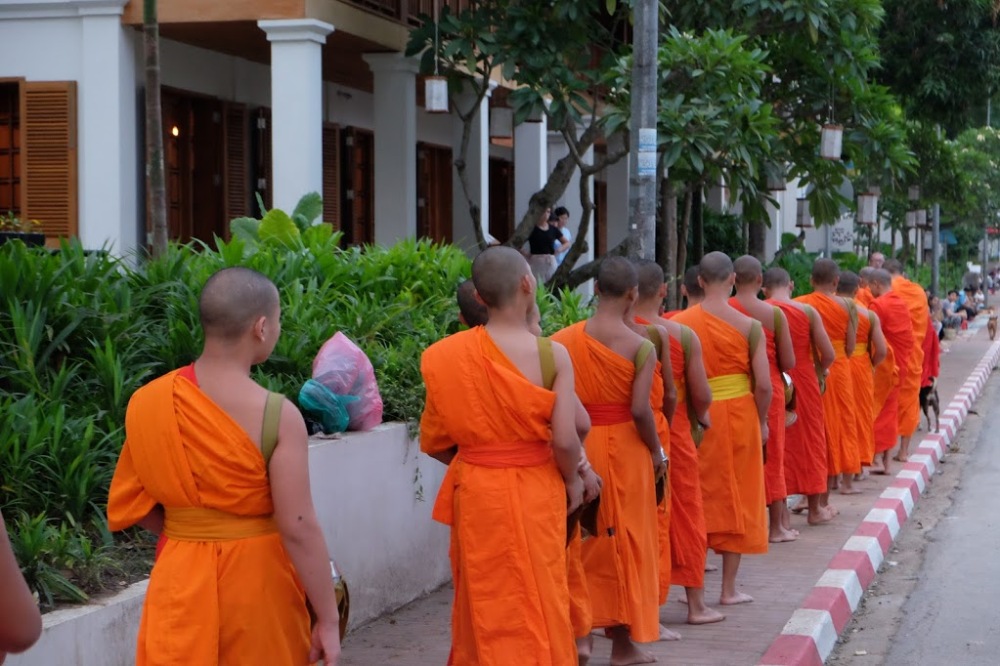
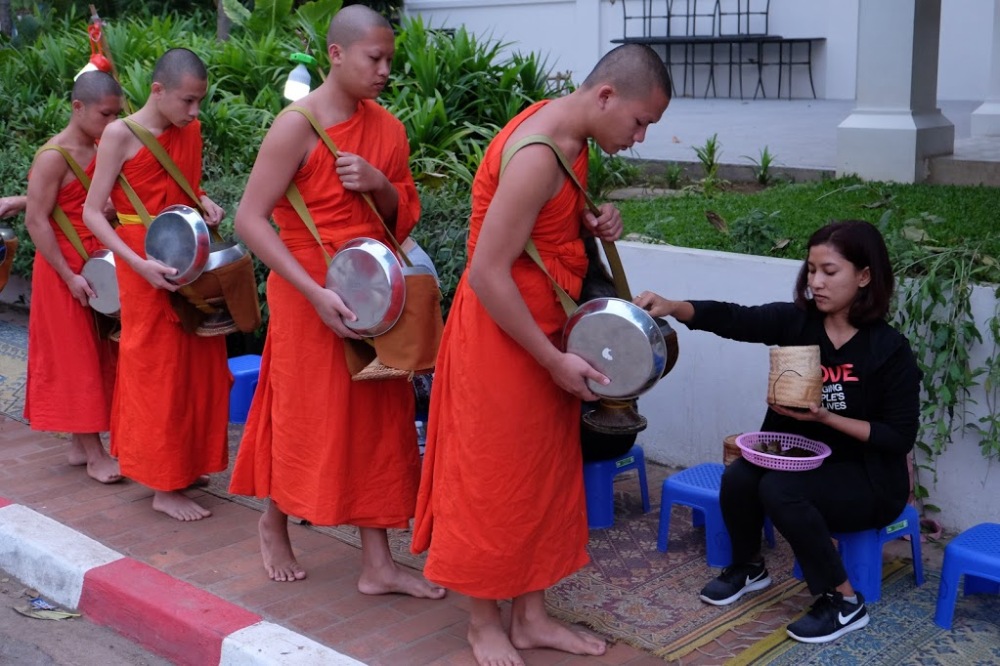
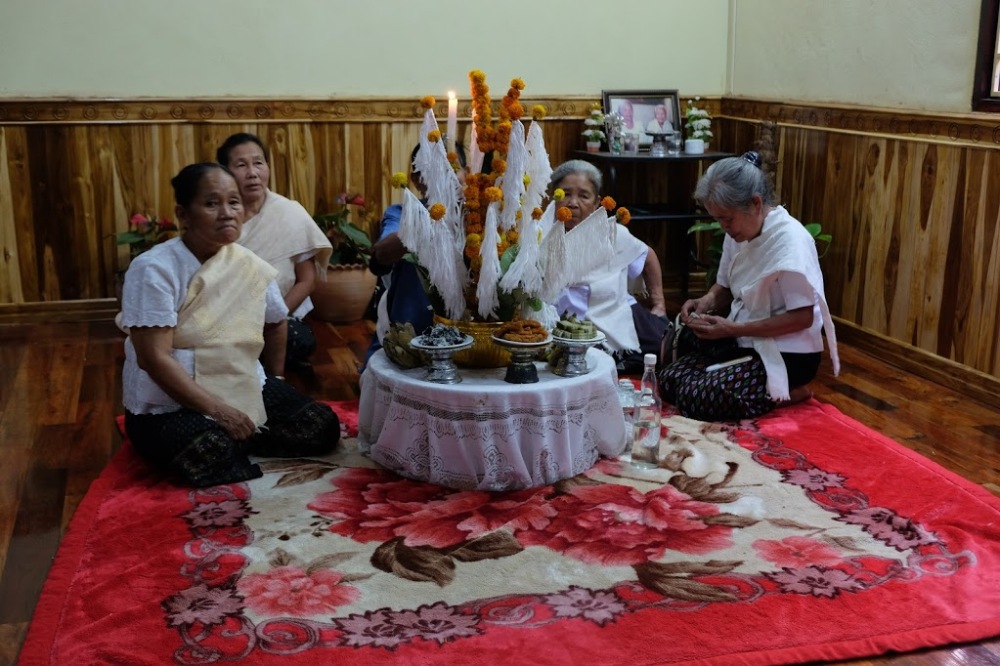
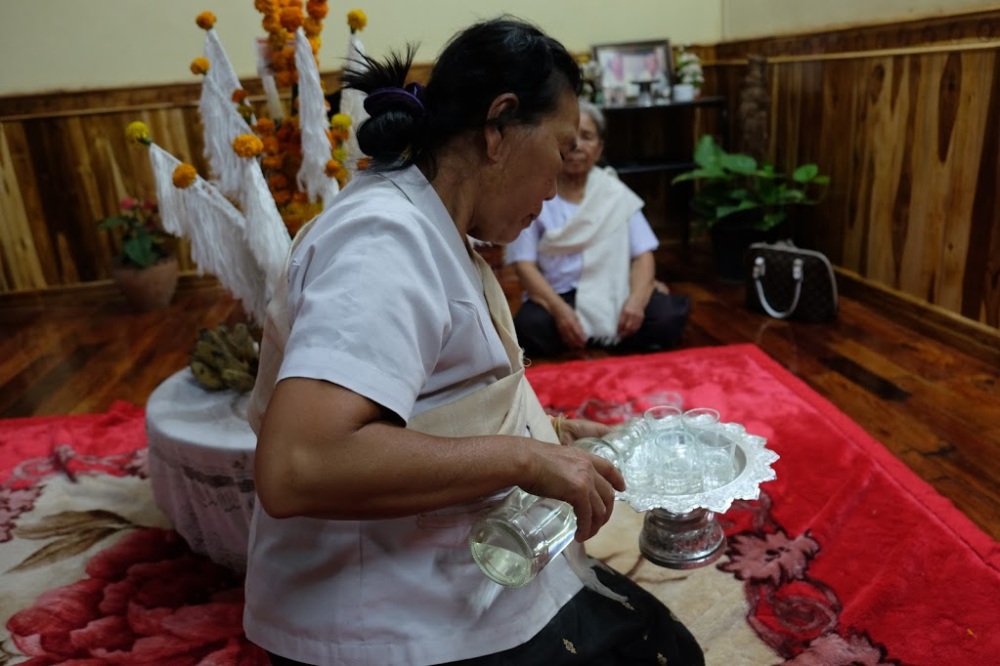
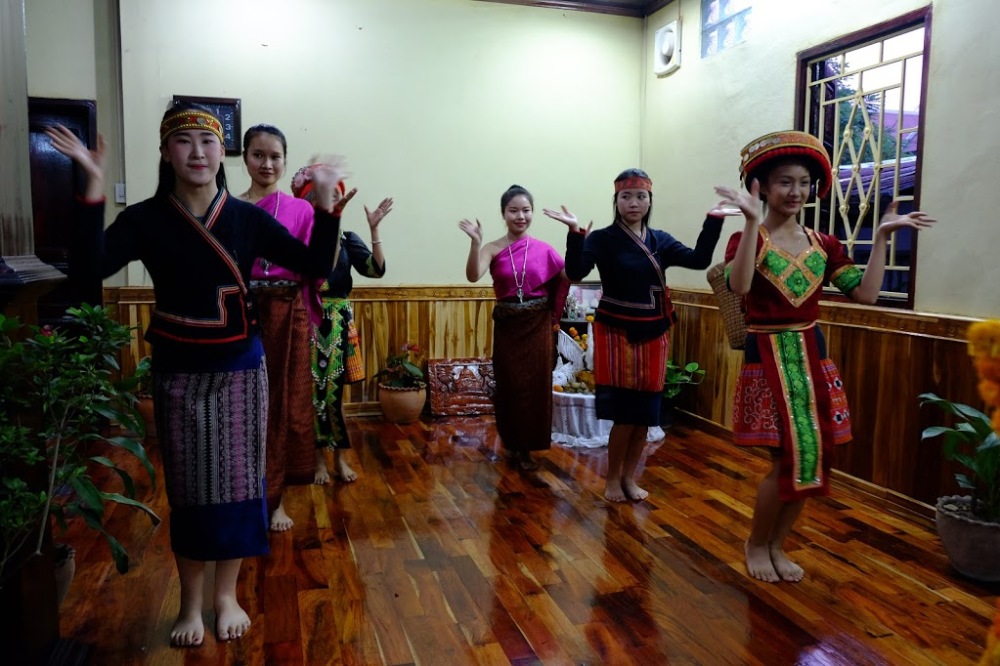

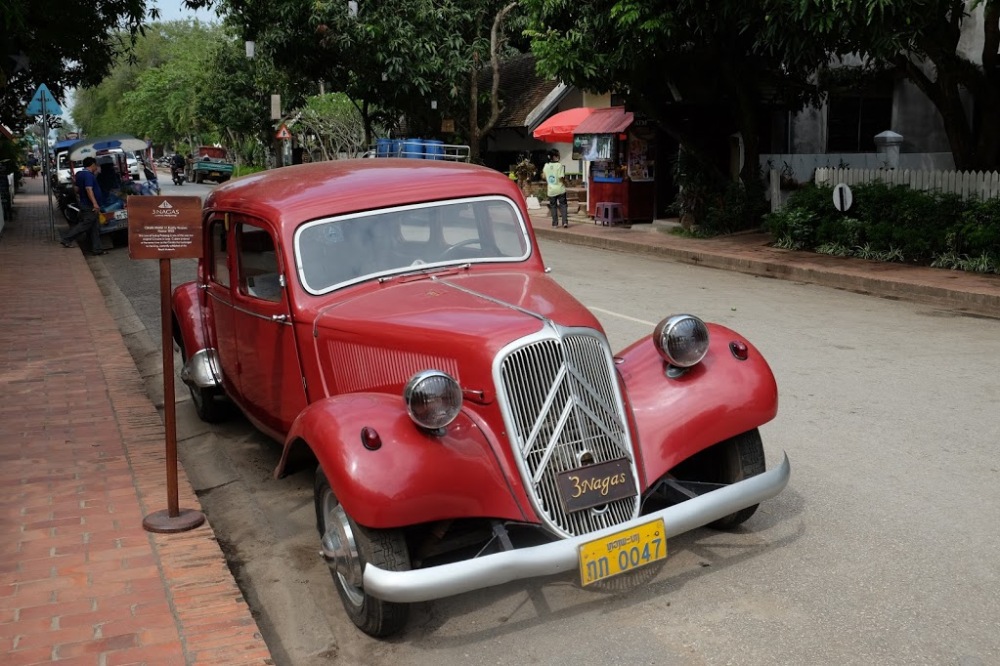
53% Laos’ population is made up of a large number of ethnic minorities, one of the largest and most well known of them being the Hmong people (large presence in the U.S. and a subject of the film “Gran Torino”). One our last day we visited a Hmong Shaman‘s home where he did a small shaman ritual to communicate with spirits to ask for good luck, health and fortune for us as we did not have an specific ailment that needed fixing. An excellent place to learn about the various groups, their history, culture and heritage is to visit the Traditional Arts and Ethnology Center in Luang Prabang, or if you have more time to venture to more rural parts of Laos to actually visit or even stay with some of these groups.
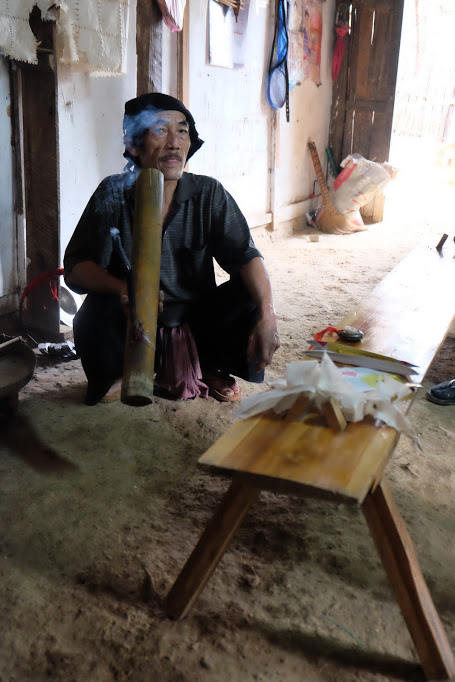

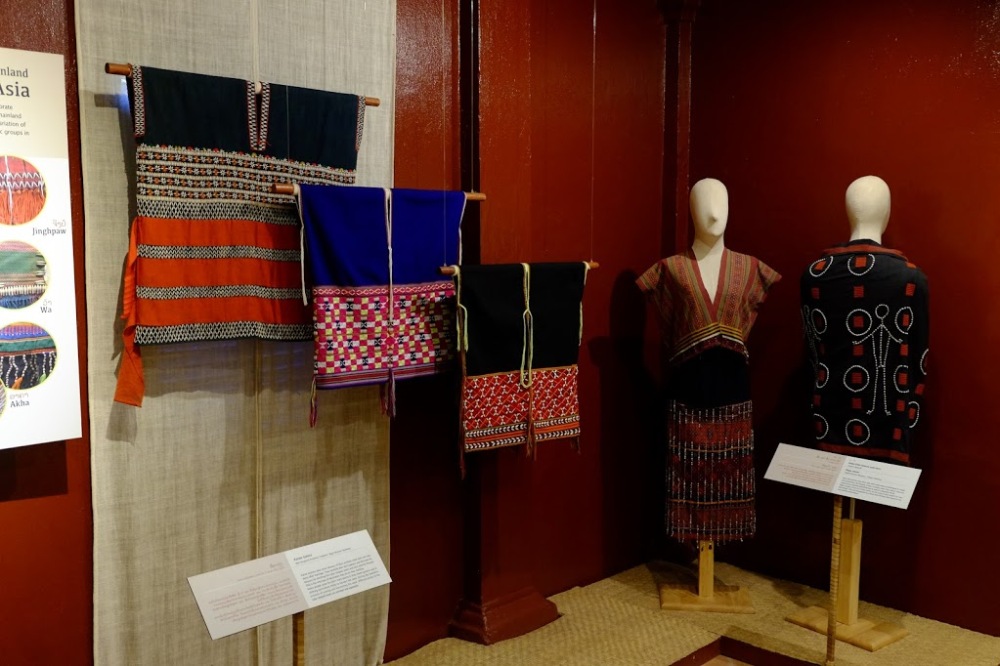
Laos is famous for their textiles. From cotton to silk and natural dyes. You can visit craft villages to experience making textiles, or visit the countless shops in Luang Prabang that sell a variety of items and also educate travelers on the origins of various fabrics and dyes and how your purchase supports local farmers and weavers. One such craft center you can visit is Ock Pop Tok Living Crafts Center, about 5-10 minutes by car from the city center, they also have a shop downtown. The cheapest and most fun way to get quality textiles, for the most part so far textiles sold here are still made in Laos and not imported from China, is at the nightly Hmong Night Market in Luang Prabang.
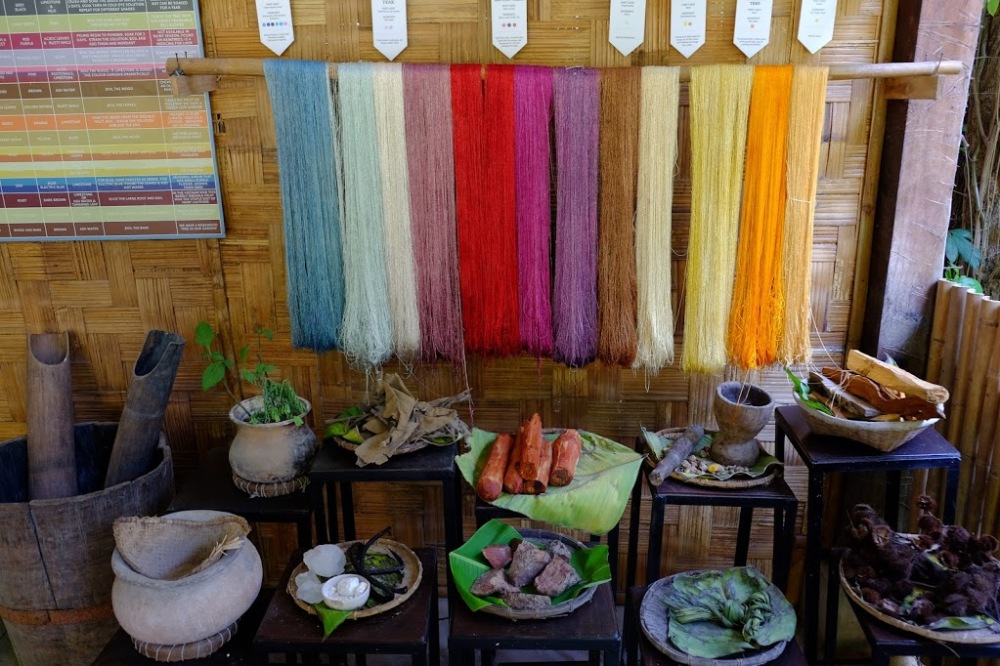
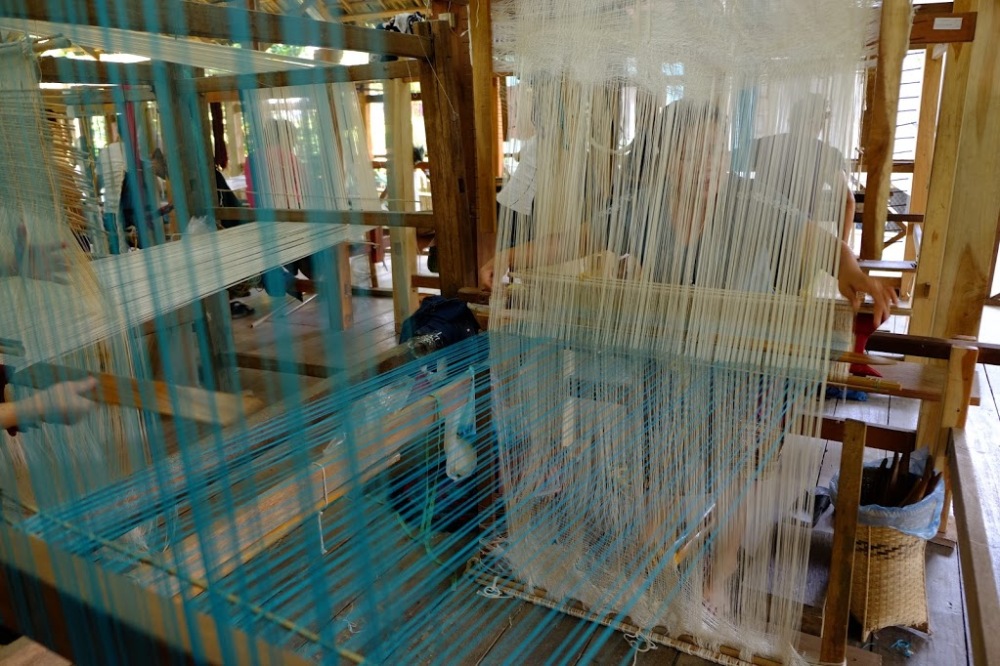

Laotian food is delicious. Sticky rice is the staple. An unofficial national dish is Larb (pronounced Laap): Laotian meat or fish salad, sometimes ceviche style. Another staple is Tam Mak Hoong, papaya Salad which is actually Laotian not Thai, who knew! And then lots of grilled river fish or meats. The flavors are familiar to Thai and Vietnamese, lots of sweet, sour and spicy, but I will say when it comes to spicy, Laotians take it to new levels than their neighbors. Either that or they havent dumbed down the spice levels for Westerners yet. Beverages include Beer Laos and Lao Lao (the national Laos liquor, a whiskey made from rice). Laotiaons eat everything and every part of any animal, nothing goes to waste. For special occasion family meals, it is said that the heart and liver of any animal are the most important parts and so are saved to give to the children to eat as a display of love but also for the children to grow. There is also a large part of Laotian cuisine that involve insects and other “normal” meats like bat or snake, both of which I tried in my “Adventurous Laos Meal” at Tamarind Restaurant. French colonial influences still remain. Plenty of cafes and coffeeshops line the streets of Luang Prabang, selling Coffee Laos (Laotian Arabica bean coffee with condensed milk or sweet cream) and delicious French pastries. Two of my favorites were Cafe de Laos and Le Banneton.

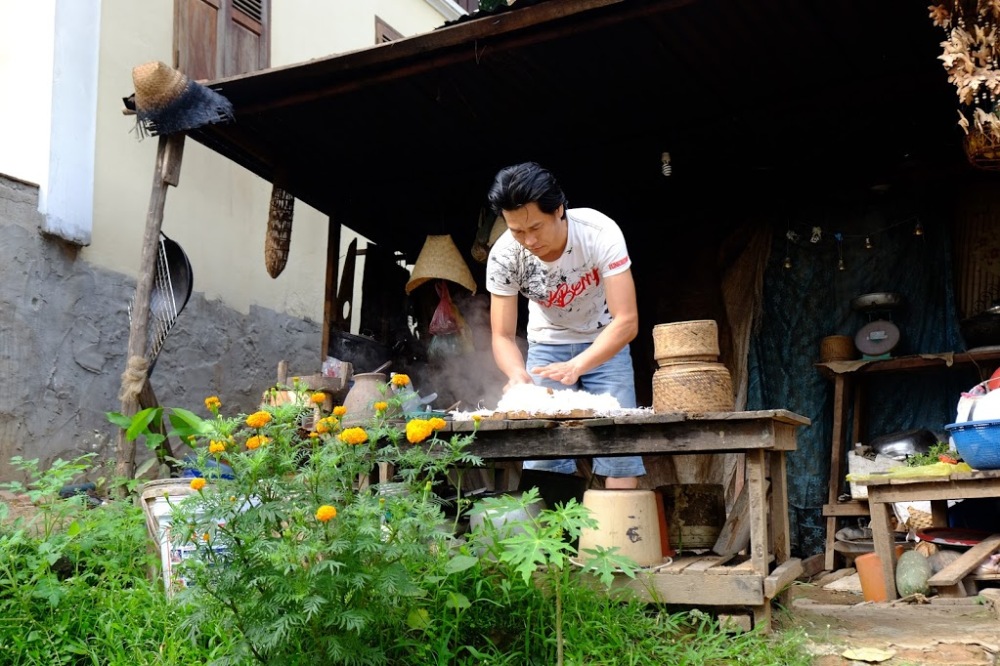
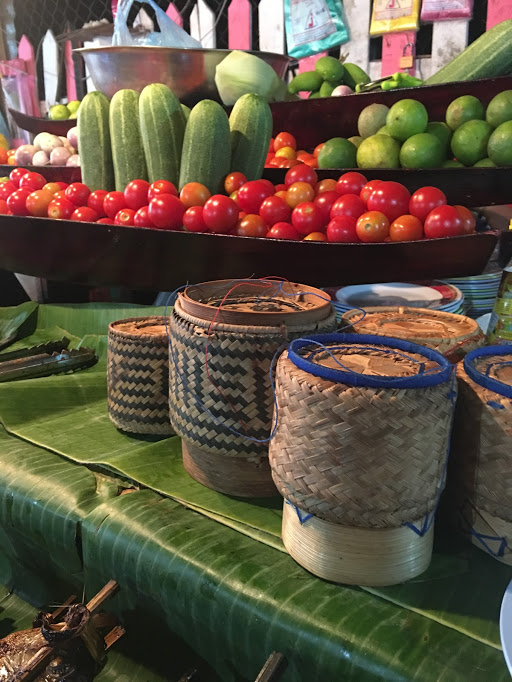


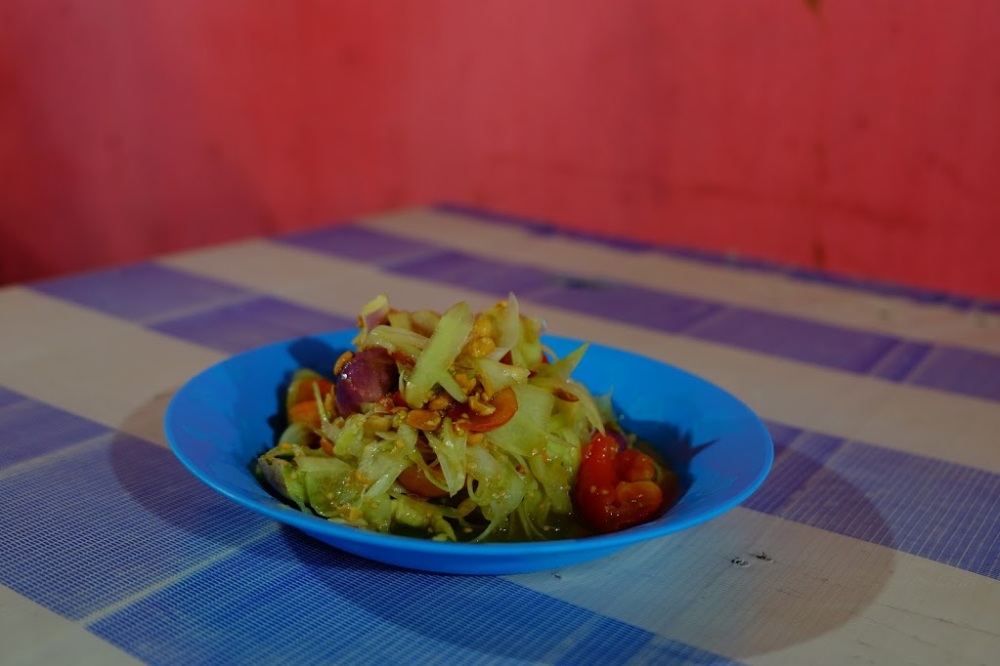

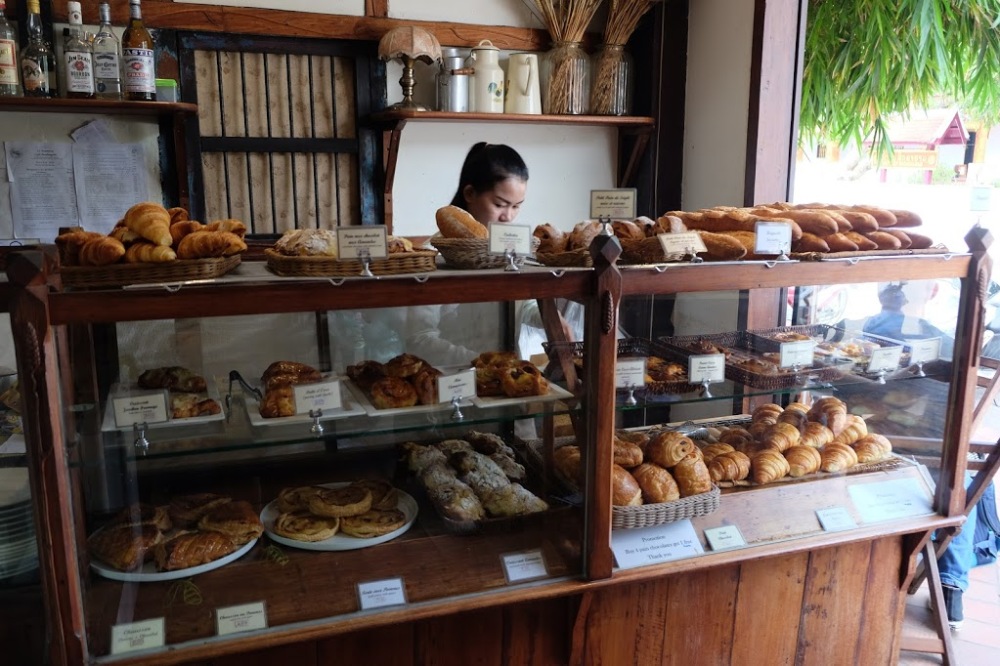
NOTE: because it is a Communist nation, regardless of what kind of guide you get for any tour, most of them will go by a general script. They are constantly monitored, and saying something offensive to the history of Laotian kings of the current communist regime could see a guide lose their license. However, the guides are nonetheless friendly, welcoming and will still be very engaging with you. Our guide was wonderful and we did not once feel he was in any way indoctrinated, he was honest and of course in response to some questions it was a tad fluffed but nonetheless they do have limited leeway.
Luang Prabang, Laos
While Luang Prabang is not the current capital of Laos, it was the ancient capital and is the historic and cultural center of Laos. Downtown Luang Prabang, the part of the city that conveniently sits on a peninsula flanked by the Nam Khan River and might Mekong is a living UNESCO World Heritage Site. This means that buildings, residents, business within this designated zone must adhere to strict rules. Buildings cannot exceed a certain height, there are only 4 exterior wall colors you can use, windows also have a limit selection of colors, you must apply for a license to run your business and a couple other rules. While this has been excellent in preserving some of the historic buildings in Luang Prabang, what has happened is that it drove housing prices up to maintain to UNESCO standards and drove out many local residents. With the entry of many boutique hotels, restaurants, cafes and shops that have done well in either building new or preserving historic buildings, many traditional Laotian wood and stilt houses have since disappeared from the landscape as well. We had a lunch and conversation through our travel agency with Mr. Francis Engelmann, a Frenchman who now has retied and resides in Luang Prabang in his stunning riverside residence built in Indo-Chine Colonial style. He was an urban planner who was tapped by UNESCO to come to Luang Prabang to help head UNESCO’s efforts in preserving Luang Prabang when it received UNESCO designation. Mr. Engelmann is extremely knowledgable in Laotian culture, history and of course all that makes up Luang Prabang. He has written many articles and scholarly papers, some of which are a worthy read as he too has admitted that the UNESCO designation is both a blessing and a curse and is a matter of balancing preservation but also having authenticity. He did note that Luang Prabang was among the first and remains the few living UNESCO sites, meaning most UNESCO sites are ruins that are unoccupied whereas Luang Prabang is a living breathing city. One of the few areas in UNESCO Luang Prabang where you can see traditional wood stilt houses is at The Heuanchanh Heritage Village.

As I said, Luang Prabang is the historic and cultural center of Luang Prabang. There are hundred of Wats (temples) across the land. One of the most important ones is Wat Xiengthong, the only temple in Luang Prabang that has NOT been reconstructed. When visiting this temple dont miss the golden pipe inside the temple that is used to pour an offering of water that then travels to a Buddha Statue, the water washes the statue and then falls below to be recycled and reused by monks. And the nearby palatial house which houses a Naga (dragon) carriage used to transport the remains of the last king.
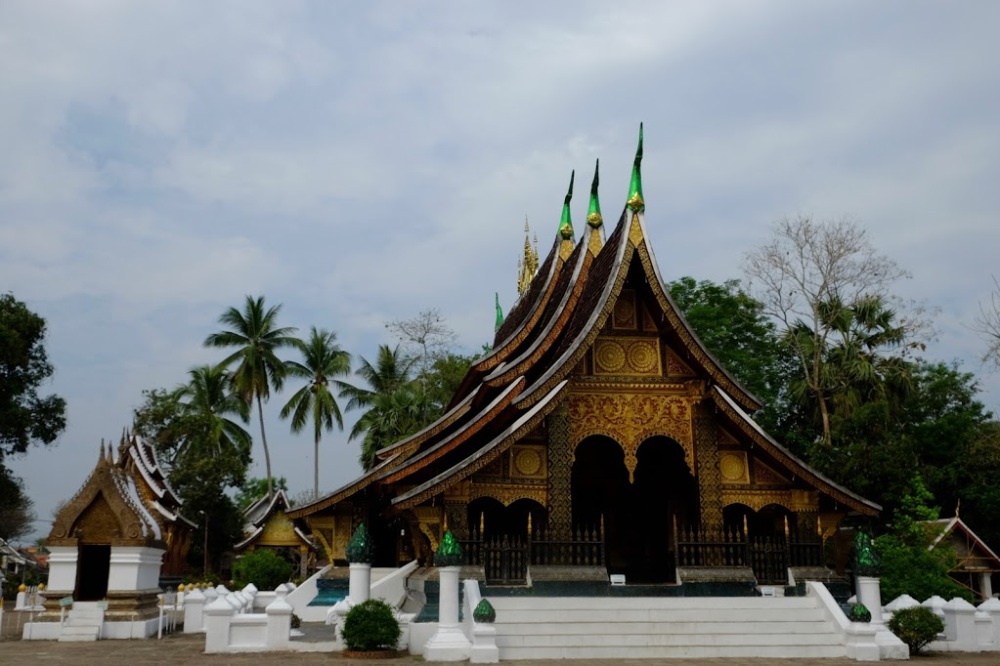
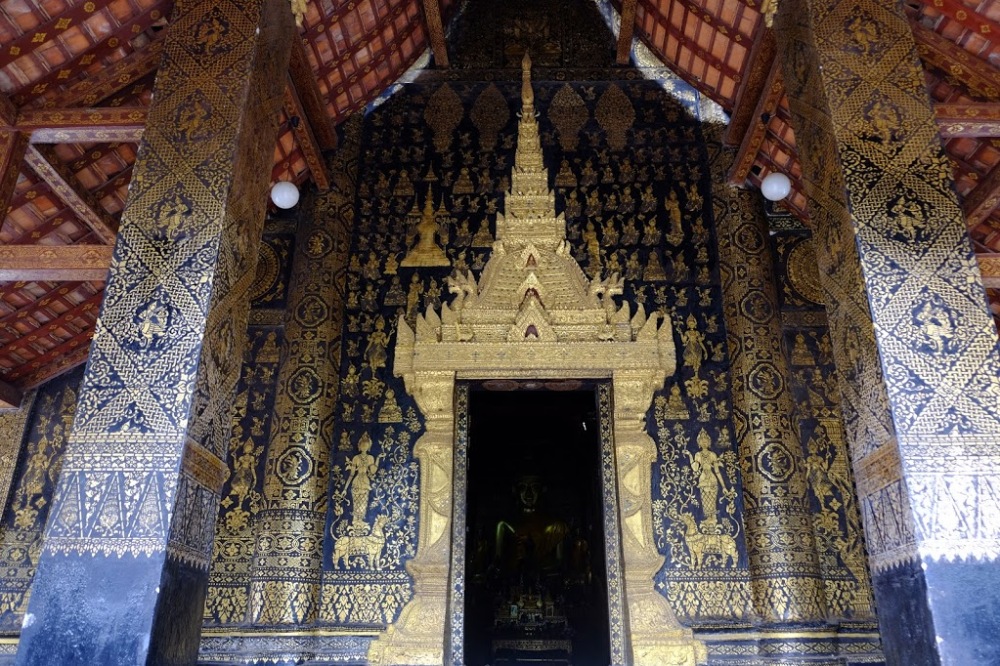
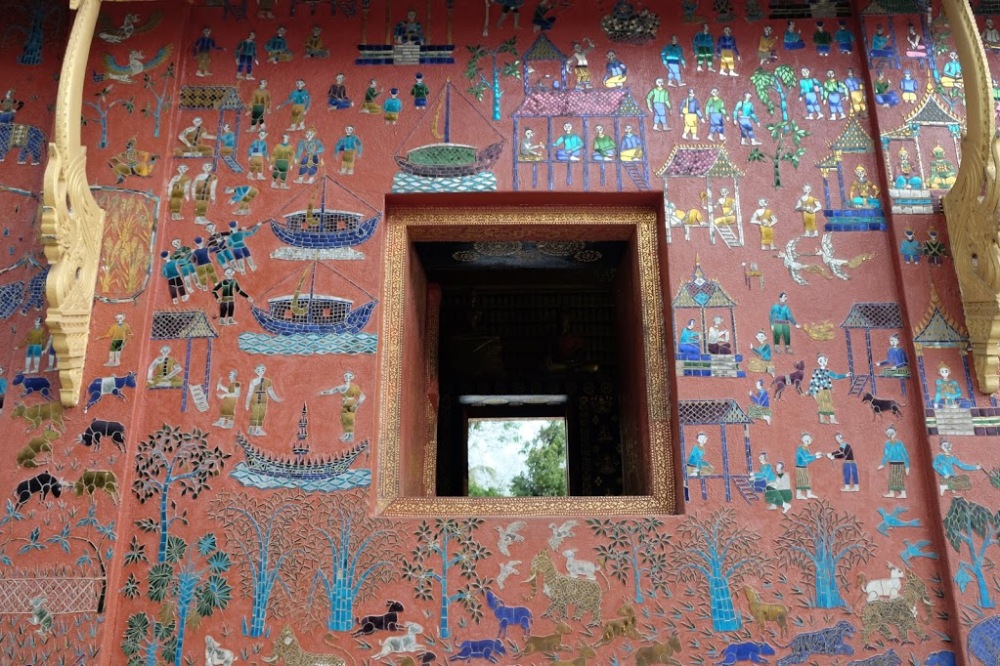
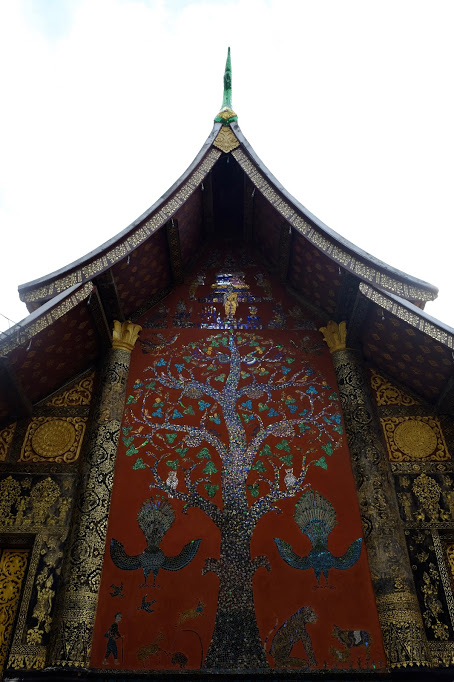
Another important building is the National History Museum housed in the Royal Palace. The Museum walks you through the Kingdom of Laos’ history and houses many gifts given to the Royal Family by foreign dignitaries in years past. Funny story about the palace that you will not get from a guide as it is considered “not official” is that the current Palace was built by the French as a gift to the Laos King as the French found it appalling that a King was living in wooden stilt palace. Thus they built him a concrete colonial palace, unfortunately the King was offended and couldnt believe they built him a hot and confided space with no nods to Laos civilization, so a stupa was added to the center. In the palace grounds is Haw Pha Bang Vat Mai, the former royal temple with a sacred golden Buddha statue which is where Luang Prabang gets it namesake from (Luang Prabang basically means Royal Buddha Image), no pictures allowed inside.
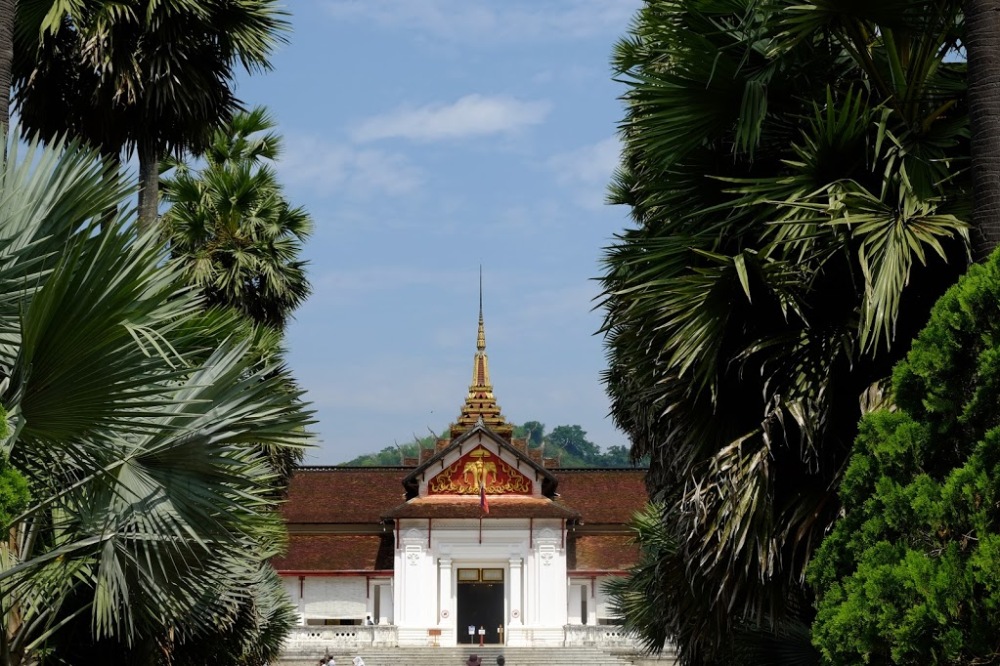
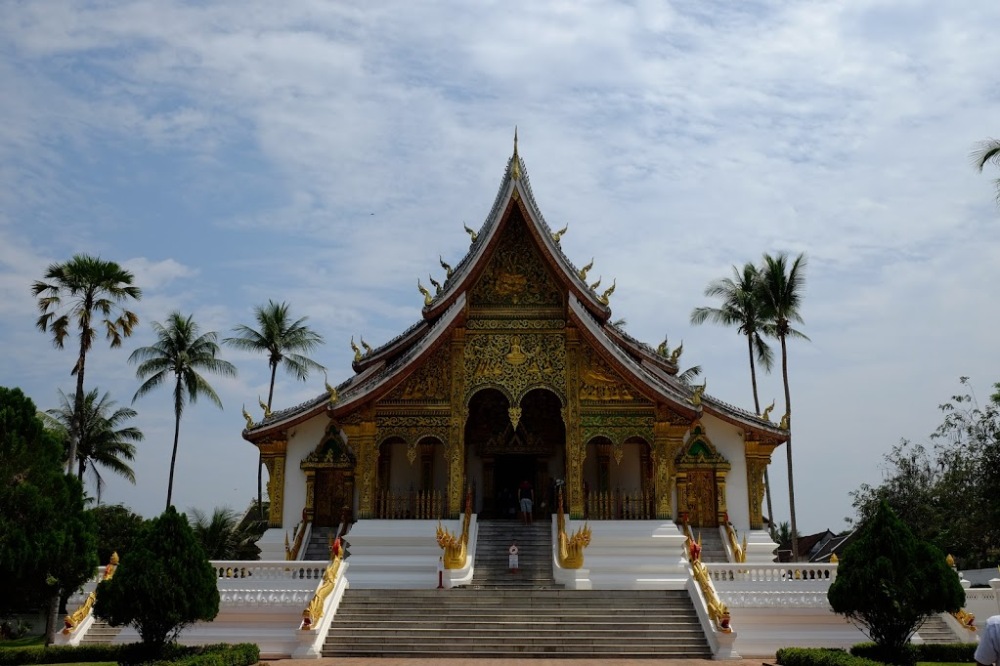
Some of the other key sites to visit I have mentioned above.
Laos is known for its natural wonders as well and one of its most famous nature sites is near Luang Prabang. About 1-hour by car outside of the city is Kuang-Si Falls. At the foot of the falls is the Asian Black Bear Rescue Center, where you can spot some fluffy and cute Asian Black Bears playing or lounging and learn more about the plight that various species of black bears in Asia face, the endangered species are hunted inhumanely specifically for their bile to use in traditional medicine. The falls themselves are stunning. Clear turquoise waters that is fresh and cool to swim in, and yes very clean. If you are able, I highly recommend hiking to the top of the falls, the path is a tad steep and slippery though, but its worth the effort as the top reservoir is beautiful and mysterious and there are a series of mini-falls along the way, did I also mention the breathtaking views of the mountains?

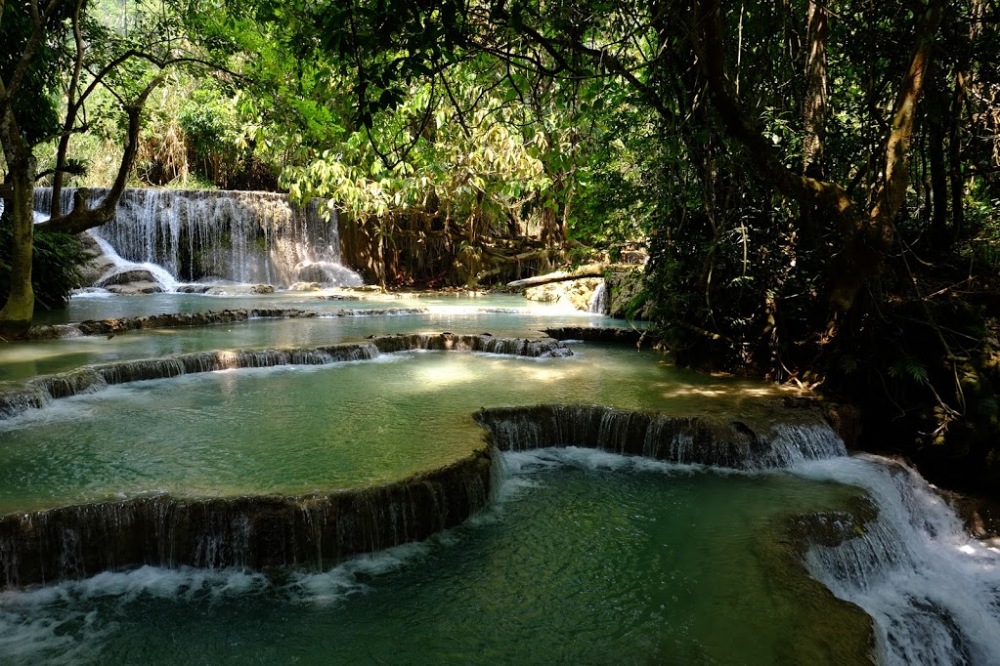
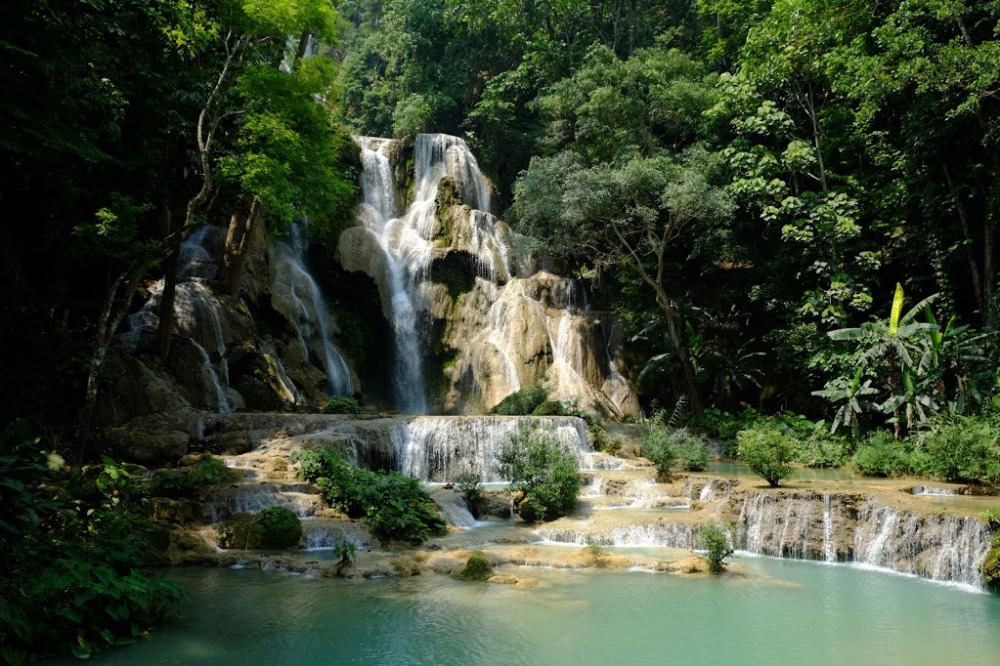

Pou-Si Hill Or Mount Phousi, is a hill in the middle of Luang Prabang with a temple atop and stunning panoramic views of the entire city and the two rivers as well as the surrounding mountains. This is the main spot for sunset views (featured image to left) and gets very crowded during that time, there is a small entry fee to pay on your hike up the steps. Worth a visit for the views, and if you are ok with crowds, an ideal location for sunset views.
A final must in Luang Prabang is a Mekong River Sunset Cruise, this may sound tacky and touristy but trust me its incredible, especially if the weather is in your favor. Our’s included dinner, that was just OK, but they can get away with it since the views are priceless. Sailing up and down river you get to witness the daily life that so heavily depends on the river. Not only that, you get to see the country light up in a stunning golden hue that with some light clouds and mist traversing the undulating mountainous landscape, giving off that mystical vibe of this untouched landlocked nation that so few seem to venture to.
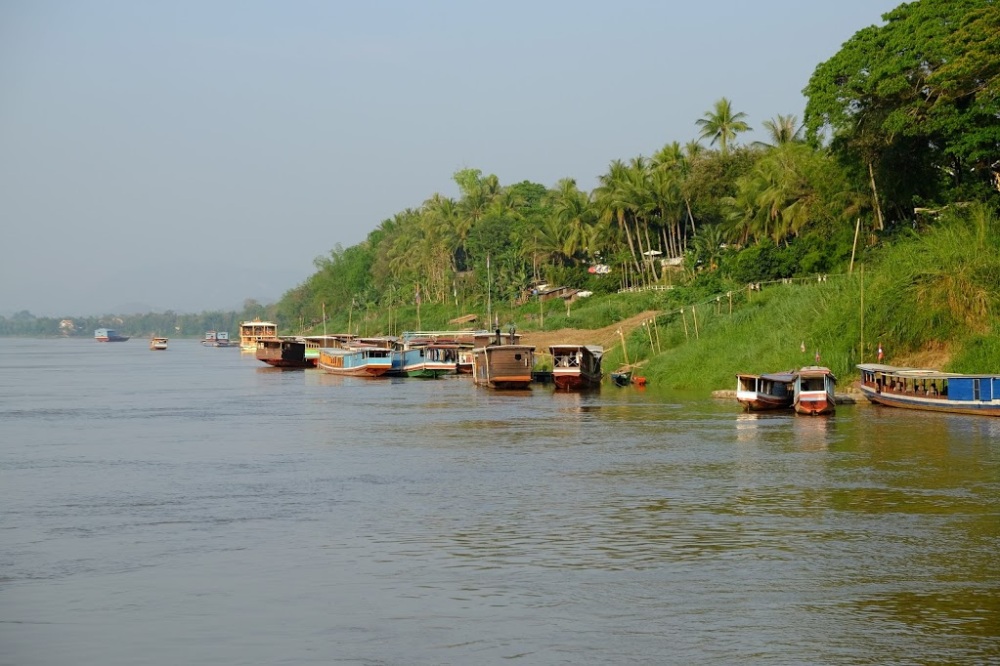


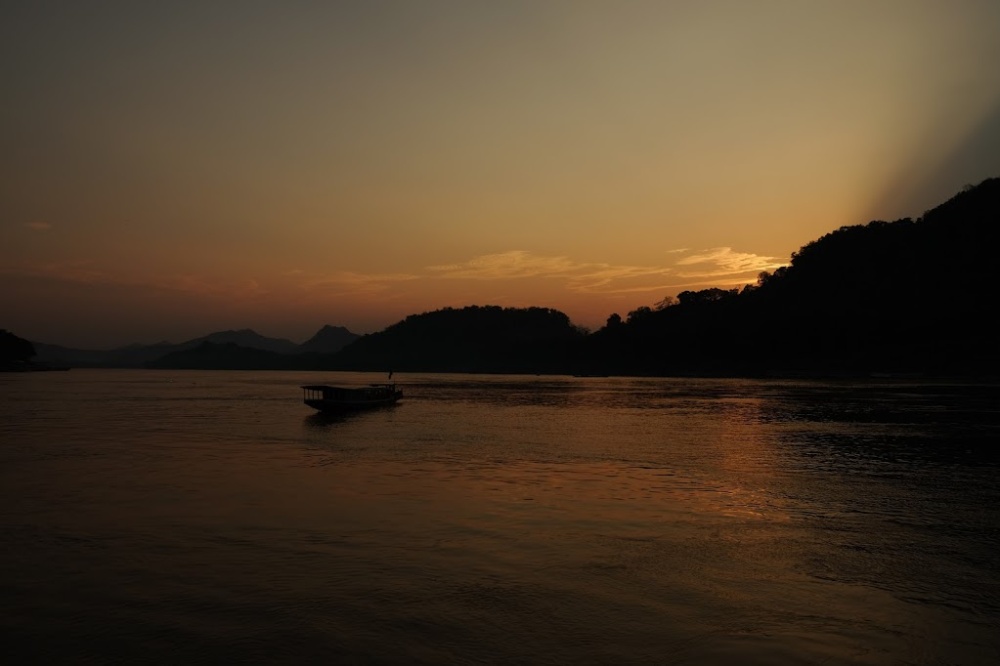
Luang Prabang Food
While Luang Prabang is not big, it is home to many restaurants and cafes and choosing where and what to eat can be tough.
As I mentioned before, when it comes to cafes for coffees or French breakfast, definitely hit up Cafe de Laos and Le Banneton. For more traditional Laotian flare for breakfast and to experience morning Luang Prabang life with locals as they shop their groceries, head to the Morning Market, located one block from the main street that is home to the night market.

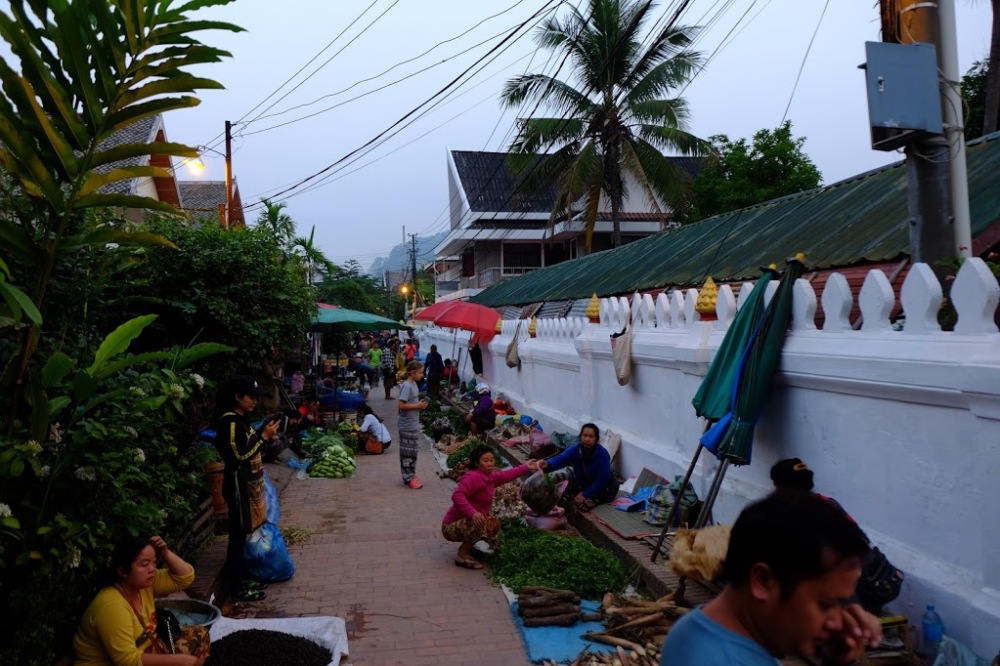

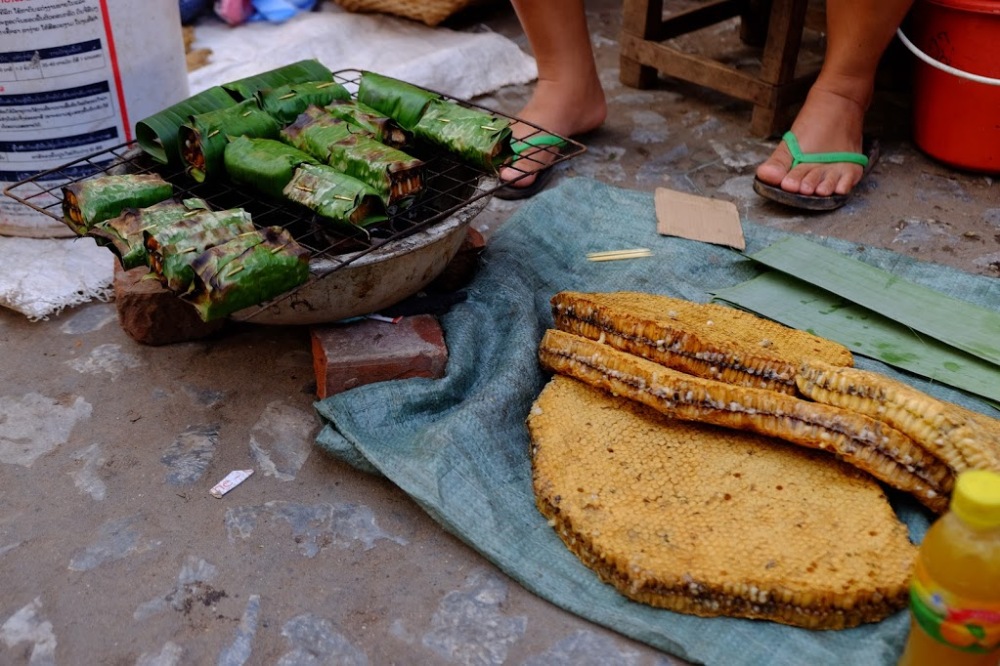

For your lunches and dinners you have many options, and here is where we enjoyed some of our meals.
Night Market food alley: at the start of the night market, there is a small alleyway of food stall after food stall. This is one of the best places to grab delicious and cheap Laotian food. From larb, to papaya salad. From grilled fish to Luang Prabang sausage, and of course ample amounts of sticky rice and Beer Laos. This is the place to experience the local food scene for sure.

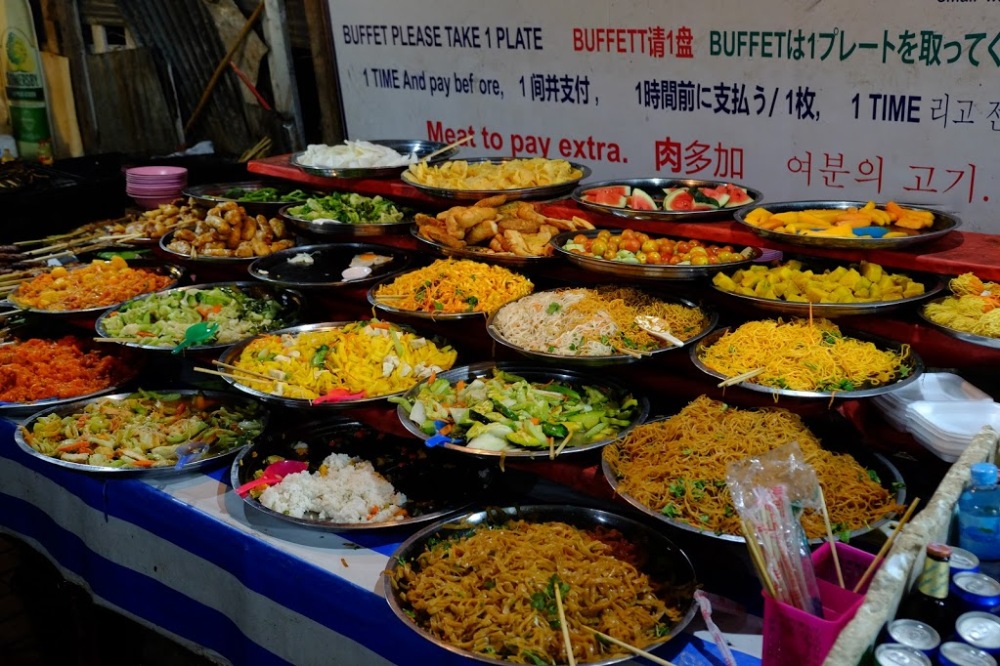
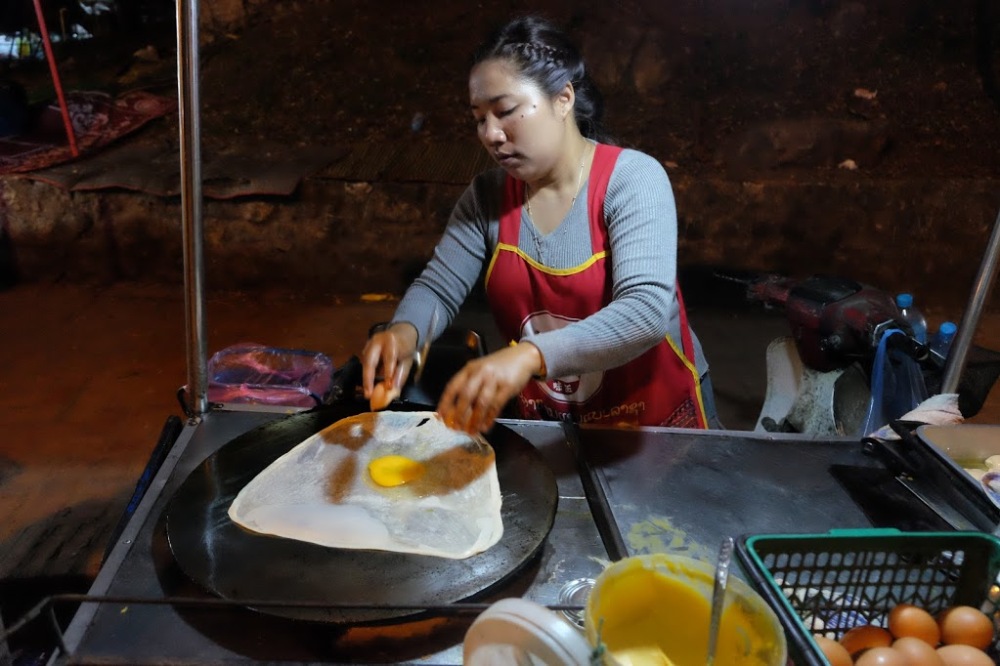
Khaiphaen: a regional NGO chain that serves local food in its country and where the staff are all young adults that were taken off the streets and trained with skills so that they wouldnt return to the streets and rely on begging or illicit activity for a source of income.
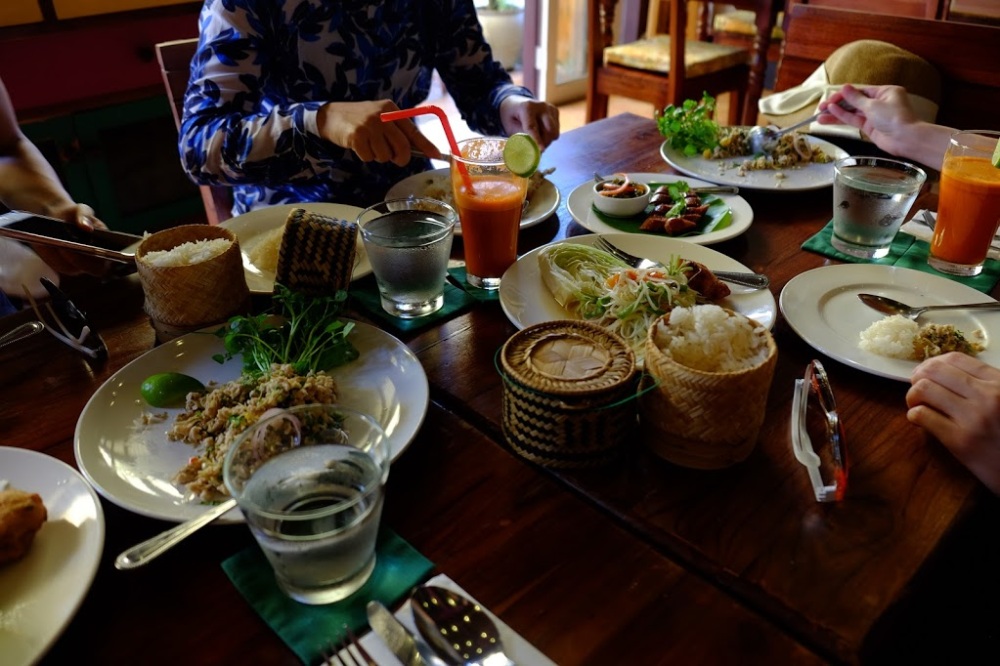
L’Elephant: widely regarded as the poshest place in town to dine. L’Elephant serves Laotian French cuisine. It is primarily French but with Laotian ingredients and in some cases true fusion of the two cuisines. Excellent food. The Duck confit with Laotian sauce and escargot were delicious. Worth a visit to experience some of the French heritage of Laos. Bookings are easy and can be done via email

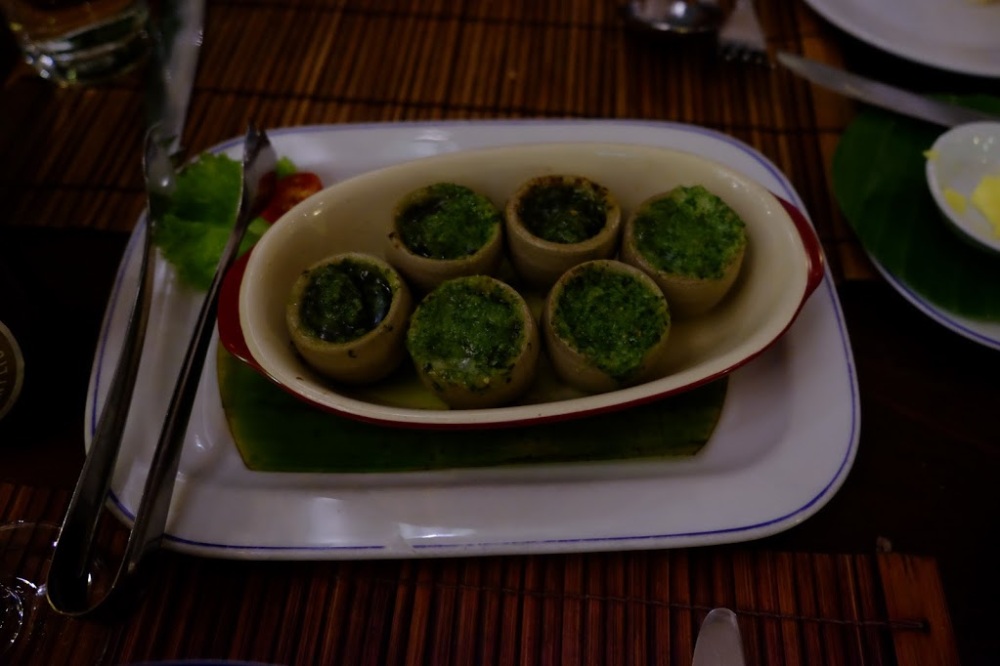
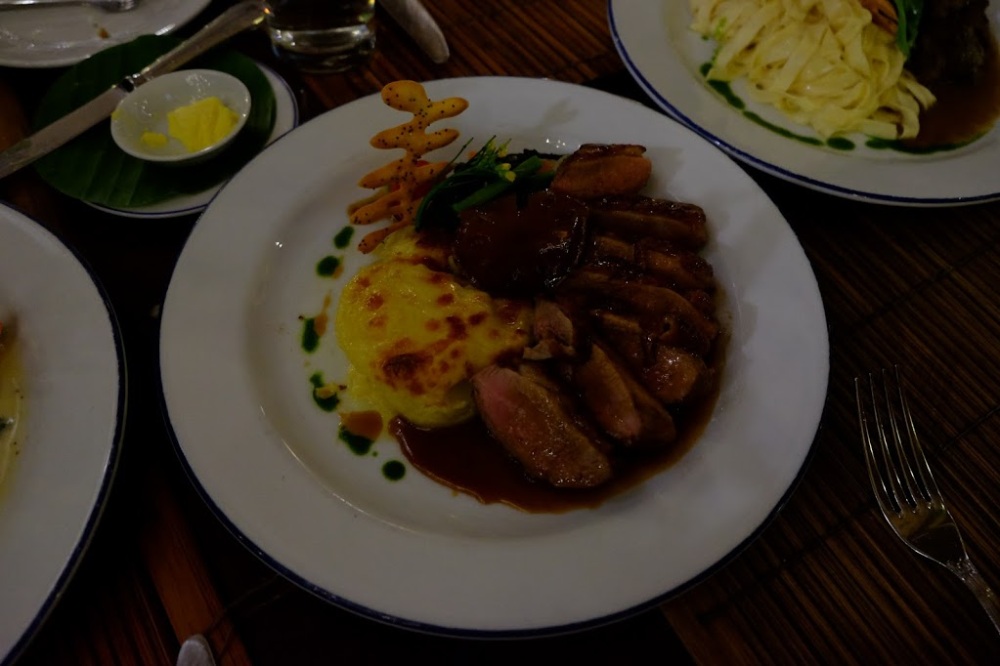
Dyen Sabai: which is on the other side of the Nam Khan River. The best way to reach it is to cross the bamboo bridge (not available in rainy season when it floods) to the other side. This riverside restaurant has great vibes and views of the Luang Prabang peninsula. Here we enjoyed a dinner of Laotian hot pot/ BBQ, which is very similar to Korean style hot pot/ BBQ.
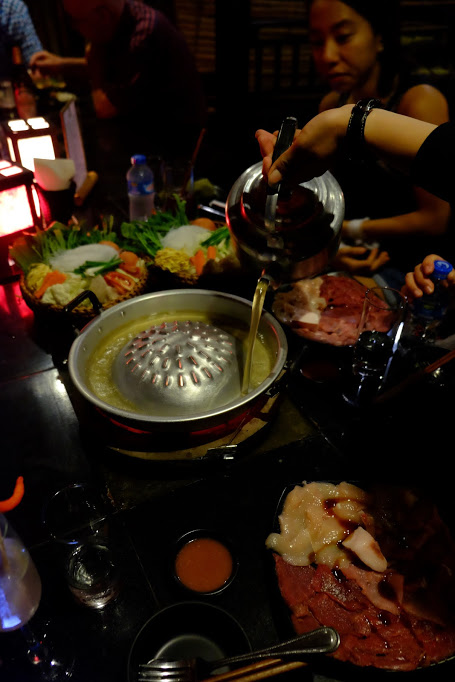
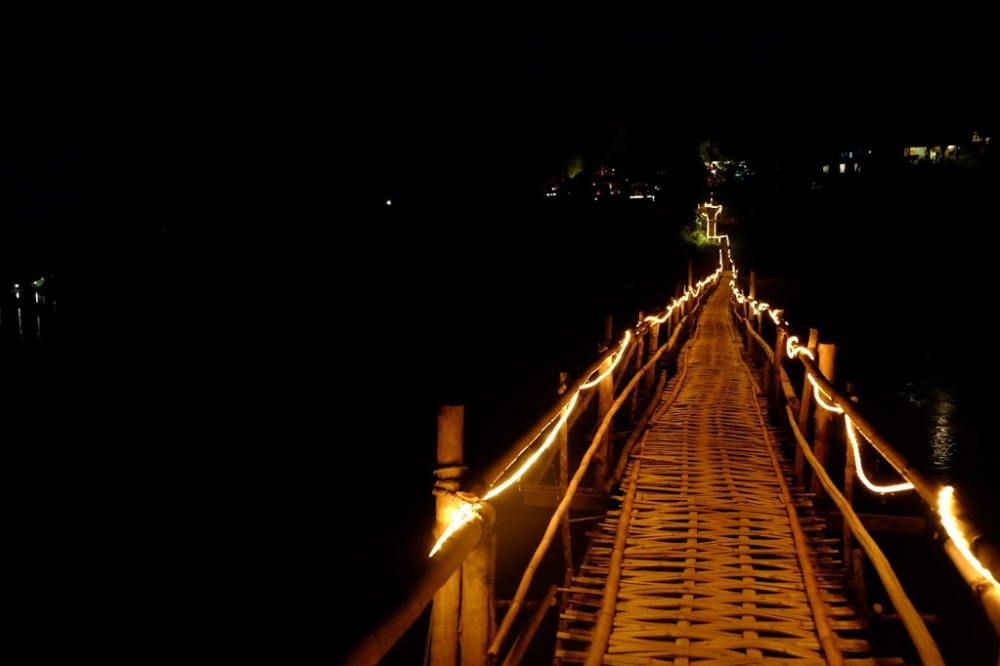
Tamarind Restaurant: One of the best restaurants in town for Laotian food. They offer a la carte menus as well as various set menus. Some set menus require advance bookings for ingredients. My family enjoyed the Traditional Laos dinner while my friend and I ate the “Adventurous Laos Meal” which requires advance booking and you must note your adventurous level, we told them to put anything in front of us. I also asked if we could join their staff to shop for ingredients for the adventurous meal the morning of our dinner, for a fee we were able to do just this and it was excellent as it included some samplings of the breakfast items being sold too! And a walk through the morning market is another showcase of what the rivers and lands of Laos offers, and trust me its a lot. Bookings are easy and can be done through email.
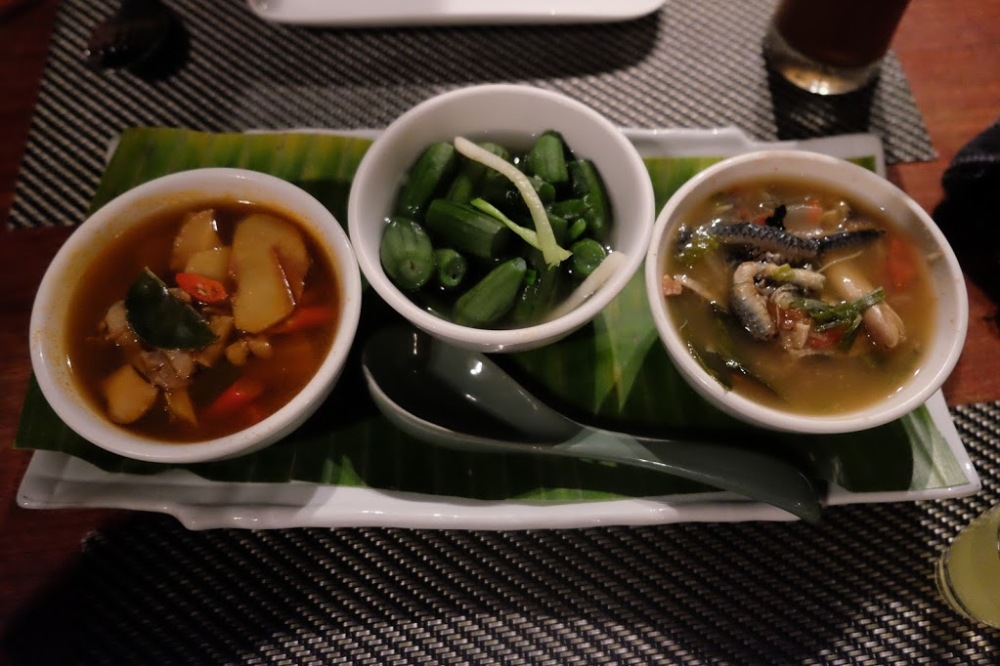
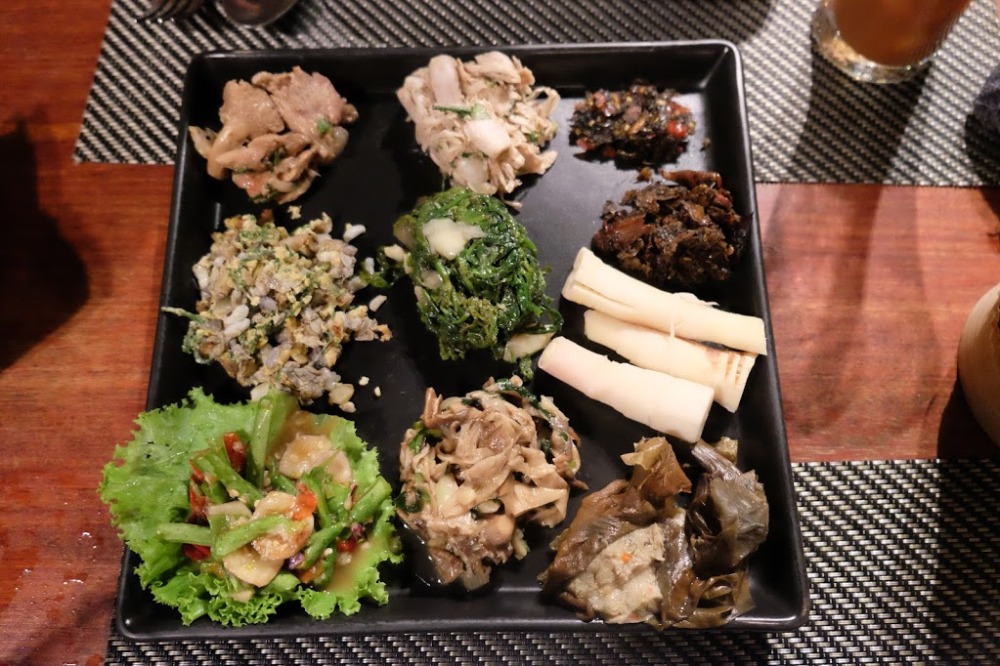

Rosewood Luang Prabang: if you dont choose to stay here, I do recommend finding time to grab a meal here in the hotel’s spectacular grounds. The food is delicious and is Laotian focused with some French influence and all ingredients a sourced from nearby farms including a Buffalo dairy farm that produces incredible Mozzarella. (Please refer to my Rosewood post, link above, for pictures and details)
Accomodations
There are countless options for hotels, hostels and even a few AirBnBs to choose from.
We stayed at the Avani+ Hotel and Rosewood Luang Prabang, a mid-range and high-end hotel. There are many boutique hotels including ones that are house in former Royal Residences like the Satri House. A beautiful hotel at the end of the peninsula is the Riverview Hotel.
Plenty of hostels to choose from as well, my friend stayed at the Downtown Backpackers Hostel, while not the best option, for $7 you get a bed, shower and breakfast!
Most options are either in downtown or within walking distance or short tuk tuk ride away. All of them have their own unique vibes and decor and cater to a variety of clientele. There are definitely more hostels and low-mid-range boutique hotels than luxury hotels (Rosewood, Amantaka, Belmond and Sofitel).
Laos, truly a magical, mystical, beautiful and genuine place to visit. 100% my favorite Southeast Asian country as it embodies all the cutlural and historic elements that make this region so unique and it does it without the need of over-industrialization or over-westernization. It is the only landlocked nation in Southeast Asia, so yes, it lacks the beaches of all its neighbors, but it makes up for it in almost every other aspect. Most people who venture to this region dont visit Laos, because its more popular neighbors overshadow it, and those neighbors are great, and I am selfishly fine if people choose not to visit Laos. But I do hope people realize it is there and more important, epsecialy my fellow Americans, realize what America did to it in the 70s.
One Comment Add yours